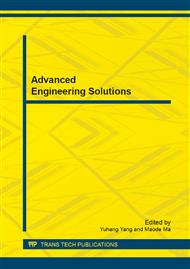p.177
p.181
p.185
p.190
p.194
p.199
p.207
p.211
p.220
Research on the Application of Chaotic Iteration Function of Heterogeneous Populations Mining Algorithm in Computer Based on Co-Evolution
Abstract:
Based on the co-evolution theory, this paper establishes the mathematical model of heterogeneous populations, and joins the chaos function concept in the model, which makes the function have the effect of turning iterative nature of chaos, and designs computer digital output algorithm. In order to study the validity and reliability of the designed algorithm and mathematical model in this paper, with the combination of BSIM3 and MOSFET model, the paper designs a computer automatic control circuit, and the circuit is studied by numerical simulation. The Md-Vds curve can be seen that the numerical simulation result is consist with experimental results, which verify the validity of the algorithm. The computer control circuit I-VTH characteristic curve can be seen that the peak value of circuit fluctuation is consisting with the theoretical situation, which verified the reliability of the algorithm.
Info:
Periodical:
Pages:
194-198
Citation:
Online since:
July 2014
Authors:
Price:
Сopyright:
© 2014 Trans Tech Publications Ltd. All Rights Reserved
Share:
Citation:


